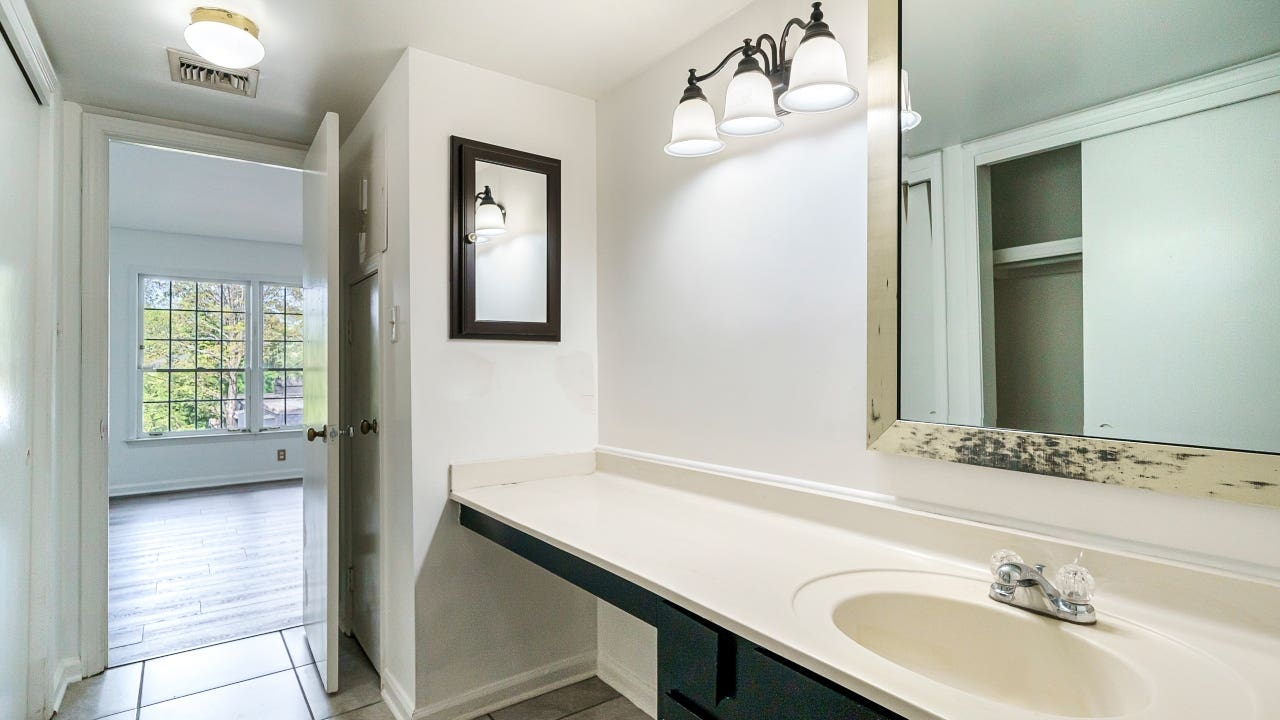8 home renovations on a budget

The Bankrate promise
At Bankrate we strive to help you make smarter financial decisions. While we adhere to strict , this post may contain references to products from our partners. Here's an explanation for .
If you want to upgrade your home, you’ll have to come up with some money. However, the amount you need might not be quite as much as you expect. It’s possible to renovate on a budget and make an impact — here are eight ideas to consider.
1. Cook up a cheaper kitchen remodel
A complete overhaul of your culinary space would be expensive: The average cost of a kitchen renovation is just over $25,000, according to HomeAdvisor. You can rein in that price tag by making minor upgrades. Can you paint your existing set rather than buying and installing new cabinets? Instead of high-end hardwood floors (these can run close to $7,000), how would bamboo (much cheaper — in the neighborhood of $1,000) feel beneath your feet?
2. Install a programmable thermostat
Some of the most valuable home renovations have less to do with what you see and more to do with how you feel. You might be able to save up to 10 percent on your utility bills with minor adjustments to your temperature for eight hours each day, according to the U.S. Department of Energy. A Wi-Fi-enabled programmable thermostat might cost you only around $200, which is a solid investment for the ability to better regulate your temperature and electric and gas bills.
3. Finish the basement — but keep the bathroom upstairs
Turning an unfinished basement into a usable space is one of the most common home improvements. While this project will come with a big cost attached to it — HomeAdvisor pegs the average price at just over $18,300 — you can keep the costs lower by opting not to include a bathroom in the design. Adding a bathroom to a basement would add around $15,000 to your costs.
4. Renovate a bathroom instead of remodeling it
A bathroom renovation — making adjustments and repairs to what you currently have — versus gutting and remodeling make a massive difference. Remodeling can involve new electrical and plumbing work and buying a new vanity and new sink. Instead, consider a smaller renovation that includes painting the cabinets, installing new lighting and other minor fixes to get the upgrade you want for less.
5. Go for the win with your window treatments
As you’re thinking about sprucing up the inside of your place, start with where the light comes in. Replacing old blinds with new custom window treatments and shades can transform your living space, and you won’t have to break the bank to do it.
6. Upgrade your closets
If your clothes are scattered everywhere, you might not have subpar organization skills; you might just have subpar closets. A custom built-in closet can cost as low as $500 and averages $3,500, according to Fixr. That’s a small price to pay for the chance to save time looking for your favorite shirt that’s been lost since last year.
7. Convert a spare bedroom into a home office
If that guest bedroom rarely has anyone sleeping in it, turning it into a home office could be a good move. As more professionals are allowed to work some days at home, having a dedicated space can make you more productive. Fixr’s estimates put the project at an average of $3,500. However, depending on what you need in the space, you can probably shrink those expenses. Avoid installing custom cabinets or a custom bookcase to keep your costs down.
8. Bring your outdoor space to life
Renovating a house on a budget isn’t limited to what’s inside. If you have space to add an outdoor deck, you can add more entertaining room to enjoy and more appeal to a future buyer. It doesn’t have to be huge, either: An eight-by-eight foot deck starts at around $2,500, based on HomeAdvisor’s data. Go with a roofless deck to save money, and compare different types of boards to find a durable and affordable option.
How to save money on a remodel
No matter what kind of changes you want to make, you can take steps to control the costs. Keep these three tips in mind:
- Stick to your budget – Saving money starts with knowing how you plan to spend it. Before you break ground on any remodel or improvement project, make an itemized budget for every cost. Then, tack on an additional 15 percent to 20 percent to account for any overages or mistakes in your initial estimate. You’ll stress less if you know that you can afford the project.
- Bargain-hunt for supplies – Part of that budget should include comparing a range of supplies. While paying someone to do the work will include their set hourly or project rate, you can cut some costs by ditching the upscale, luxury products in favor of a more economical route.
- Take care of some responsibilities on your own – Depending on how handy you are and how much time you have on your hands, the DIY option might be viable. You’ll save plenty of money if you pay solely for parts and supplies. However, doing it yourself means you need to know how to actually do it. Make sure you recognize when a project is too advanced for your expertise. While it might be more expensive to hire a contractor to handle those details, it will be cheaper in the long run than starting the project, ruining part of your home, and hiring someone else to fix it.
Related Articles



